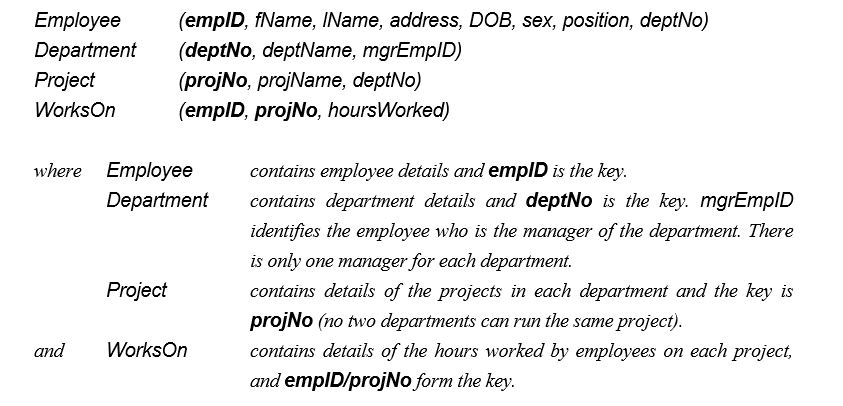The following tables form part of a database held in a Relational Database Management System:

(a) (1) List all employees in alphabetical order of surname and within surname, first name.
(2) List all the details of employees who are female.
(3) List the names and addresses of all employees who are Managers.
(4) Produce a list of the names and addresses of all employees who work for the 'IT' department.
(5) Produce a complete list of all managers who are due to retire this year, in alphabetical order of surname.
(6) Find out how many employees are managed by 'James Adams'.
(7) Produce a report of the total hours worked by each employee, arranged in order of department number and within department, alphabetically by employee surname.
(8) For each project on which more than two employees worked, list the project number, project name and the number of employees who work on that project.
(9) List the total number of employees in each department for those departments with more than 10 employees. Create an appropriate heading for the columns of the results table.
(b) Create a view of employee details for all employees who work on project 'MIS Development', excluding department number.
Correct Answer:
Verified
Q1: What are the main advantages and disadvantages
Q2: Consider the following relational schema:

Q4: The following tables form part of a
Q5: The relational schema shown below is part
Q6: A relational database contains details about journeys
Q7: The following tables form part of a
Q8: Write SQL*Plus commands to do the following:
Q9: Assume that the following table is created
Q10: What is a sequence? Write an SQL
Q11: (a) What is a 'table' and what
Unlock this Answer For Free Now!
View this answer and more for free by performing one of the following actions

Scan the QR code to install the App and get 2 free unlocks

Unlock quizzes for free by uploading documents